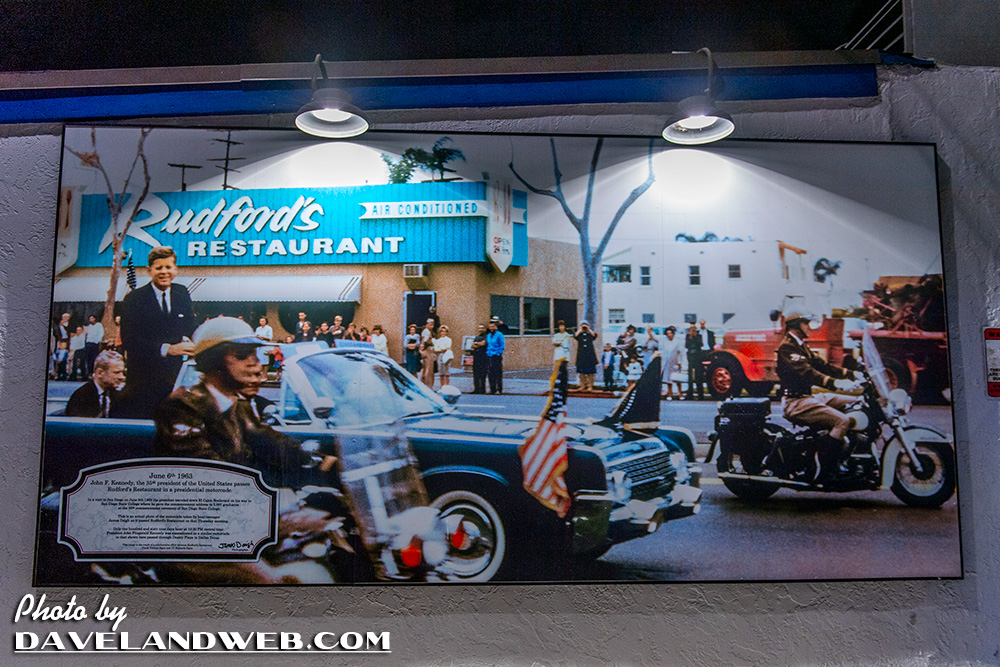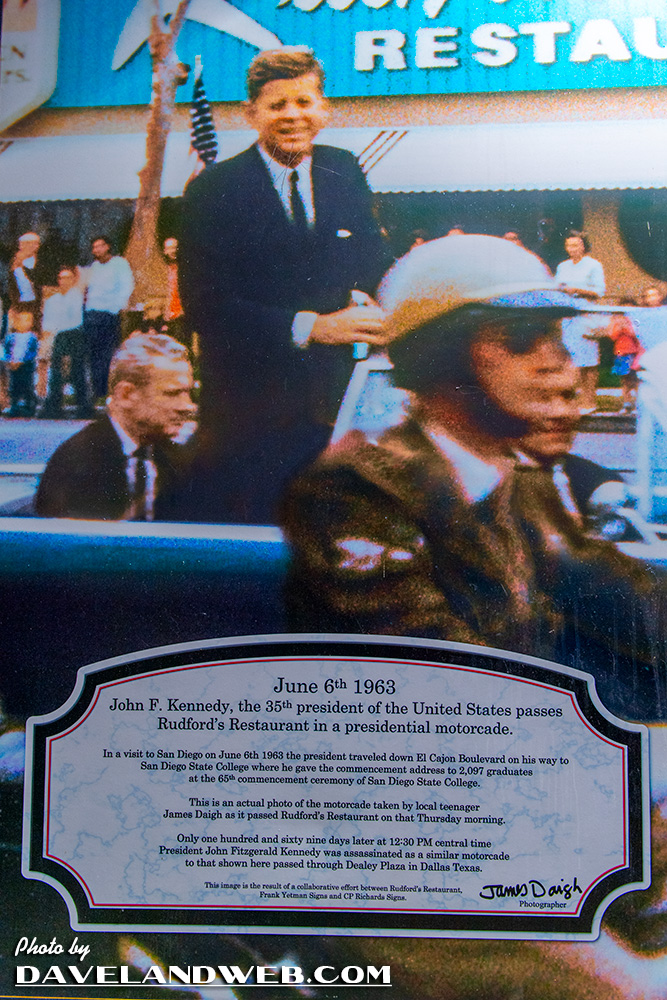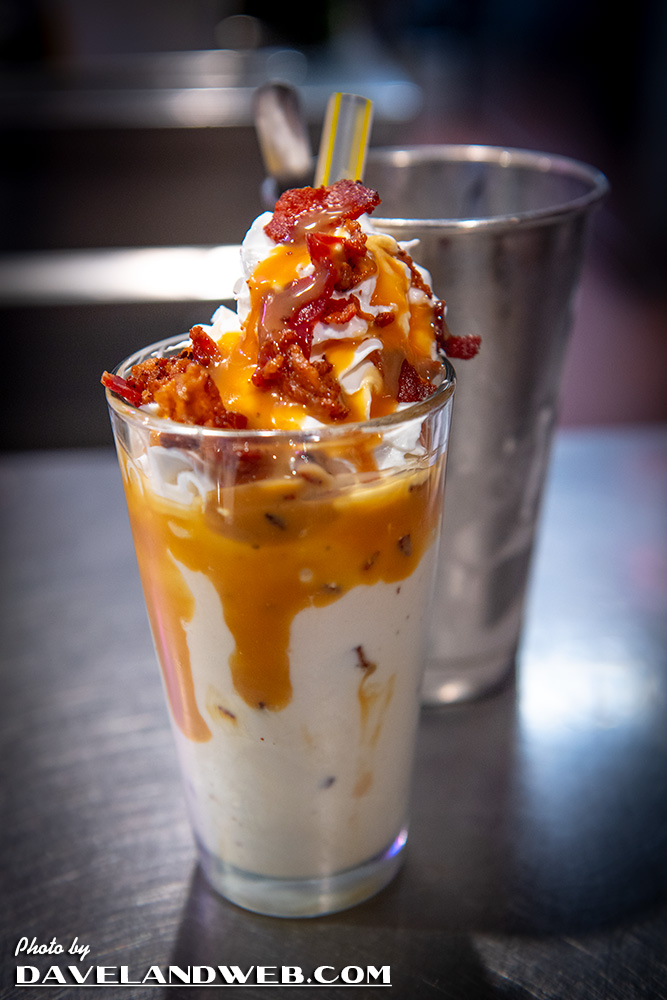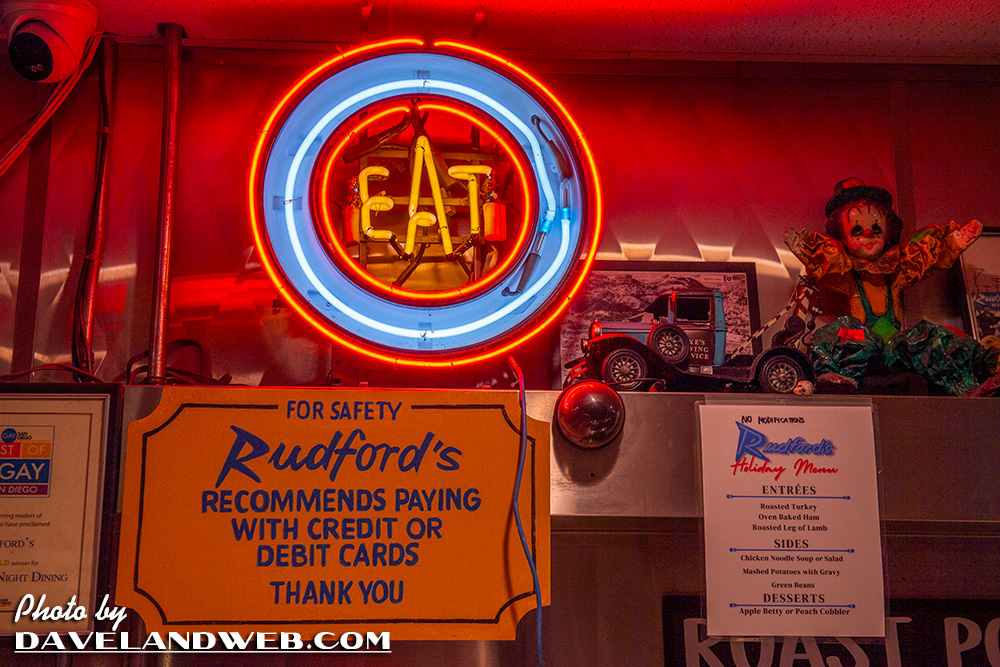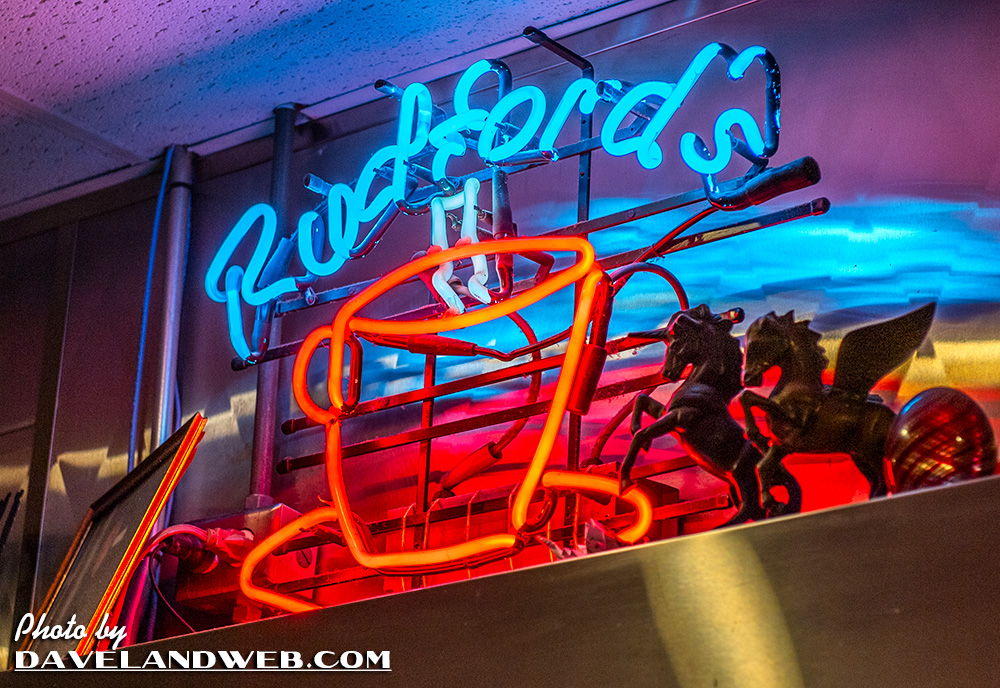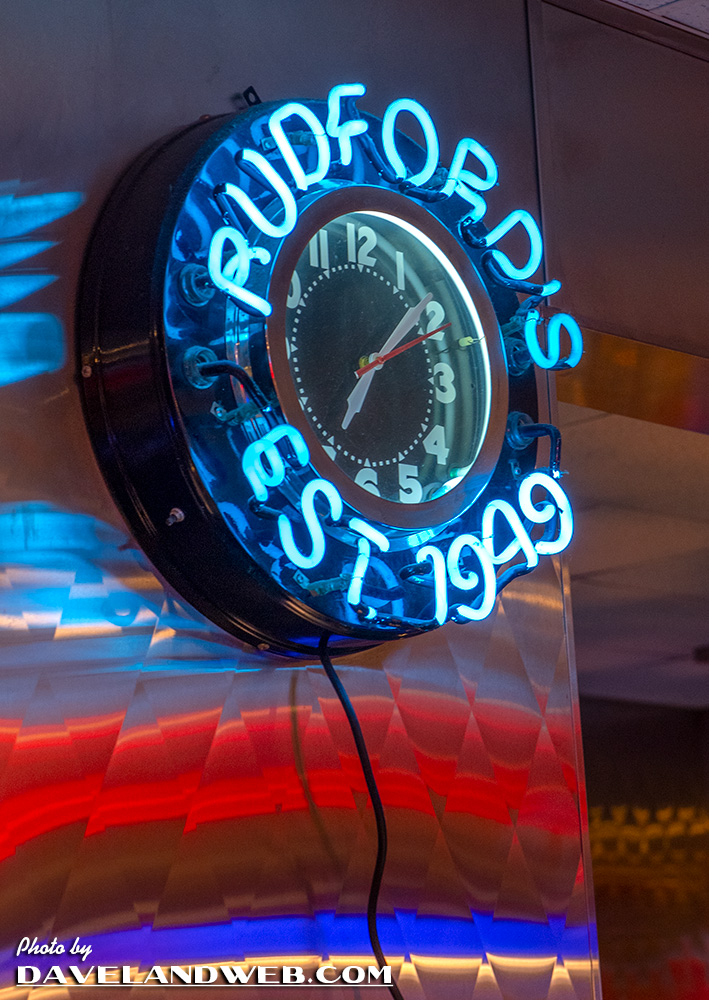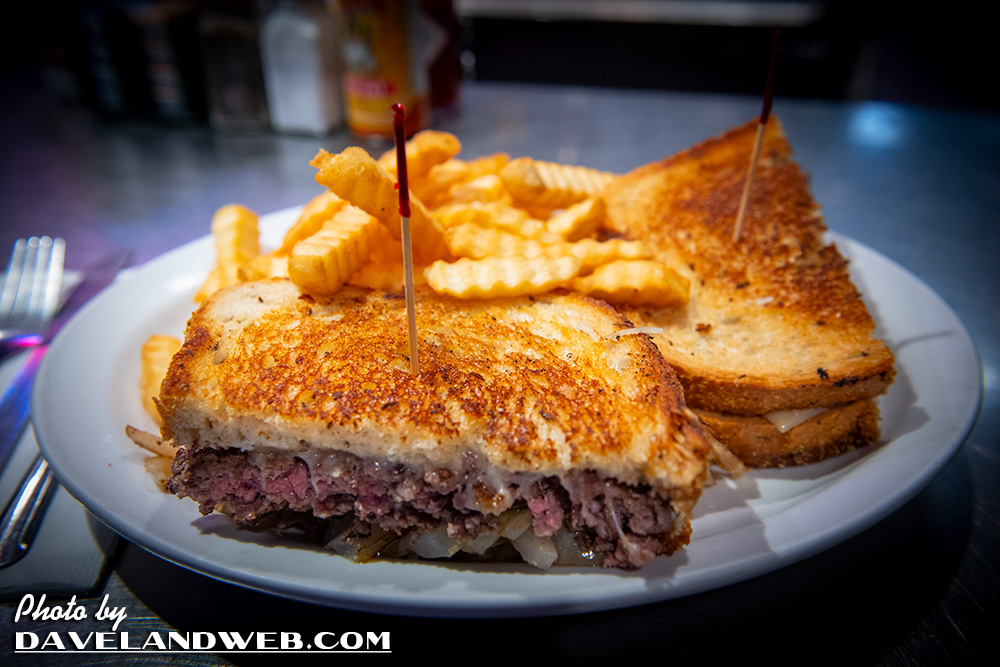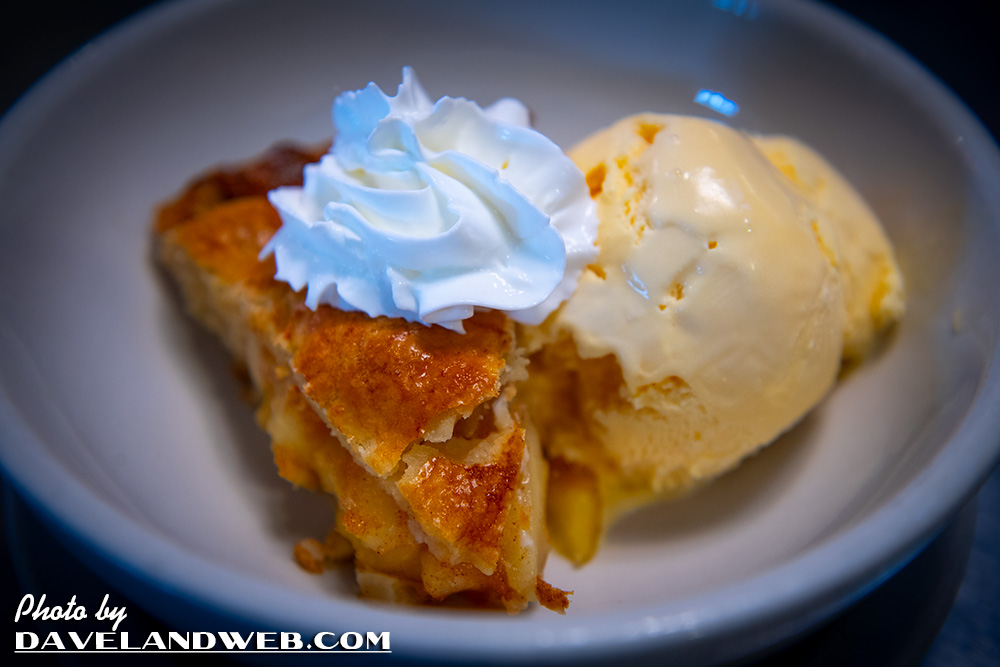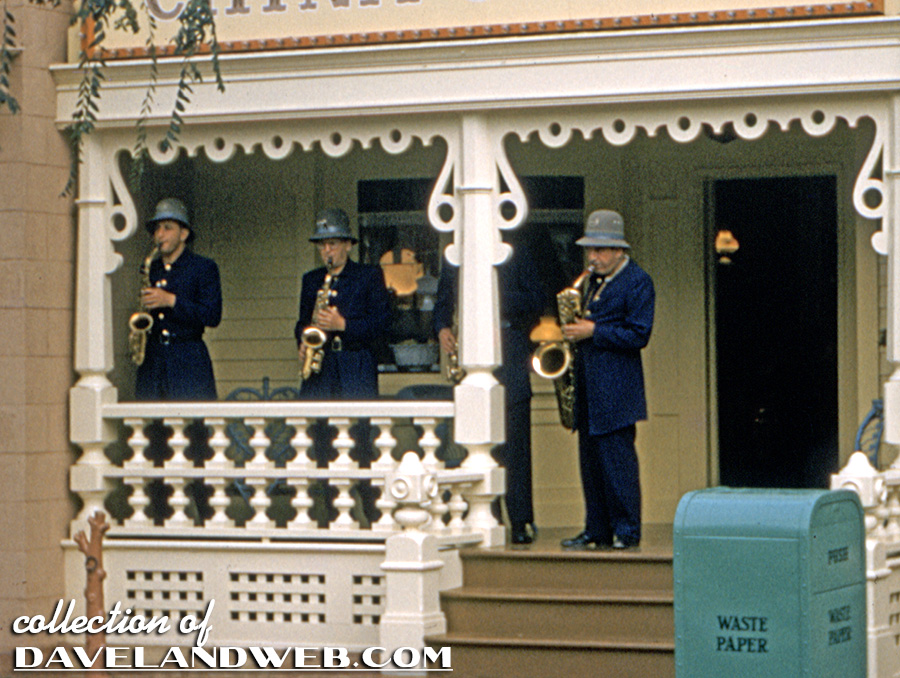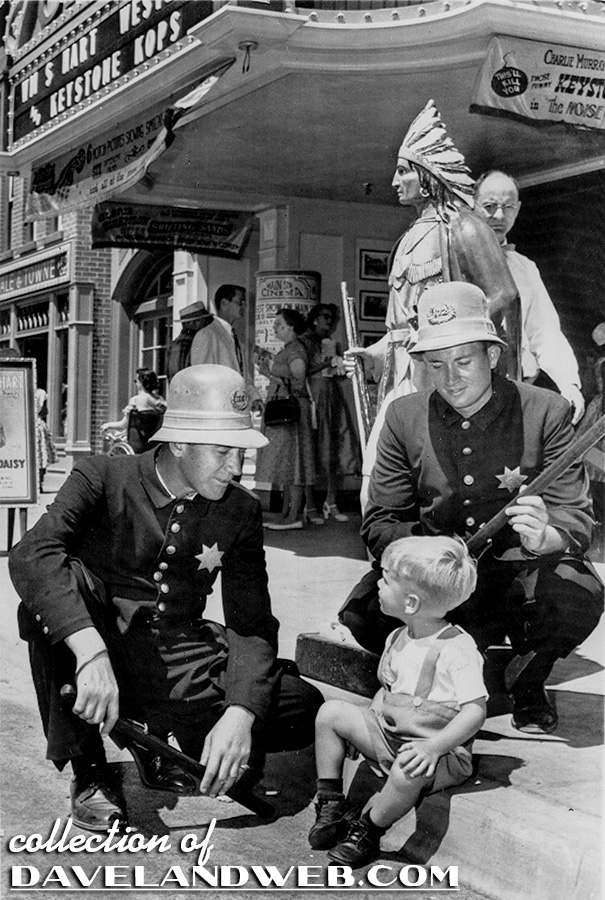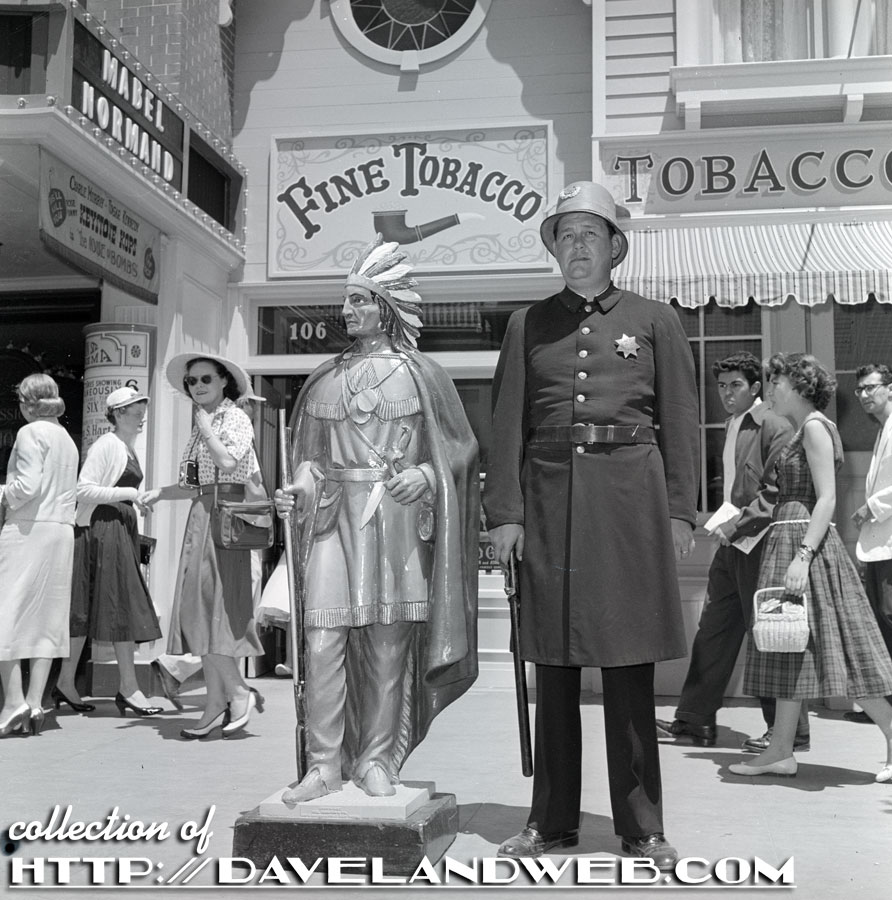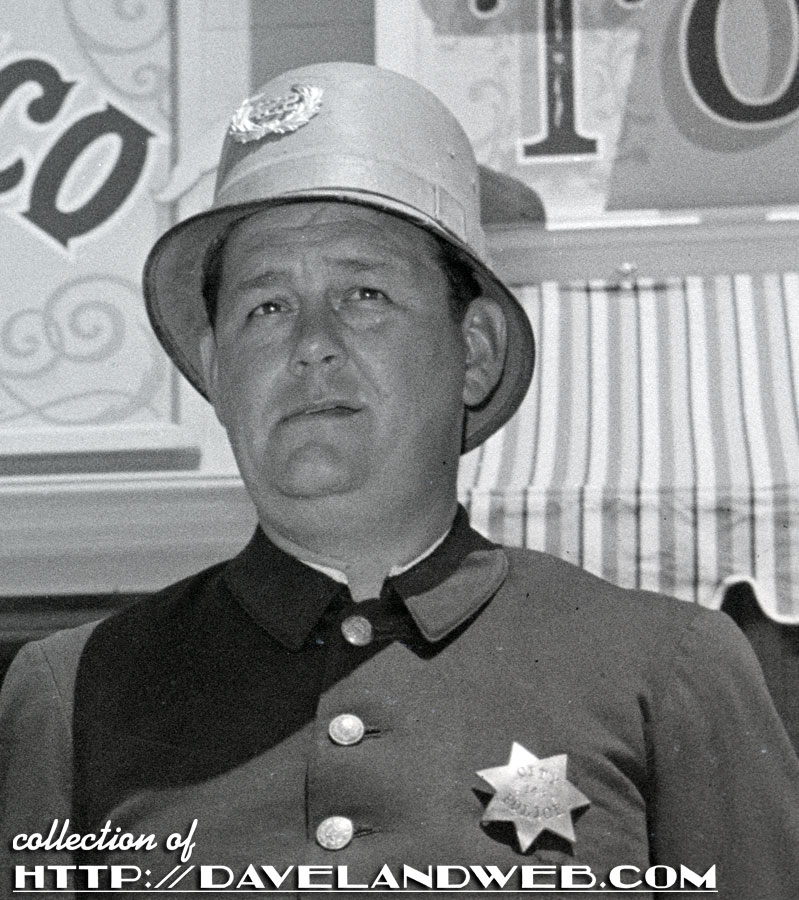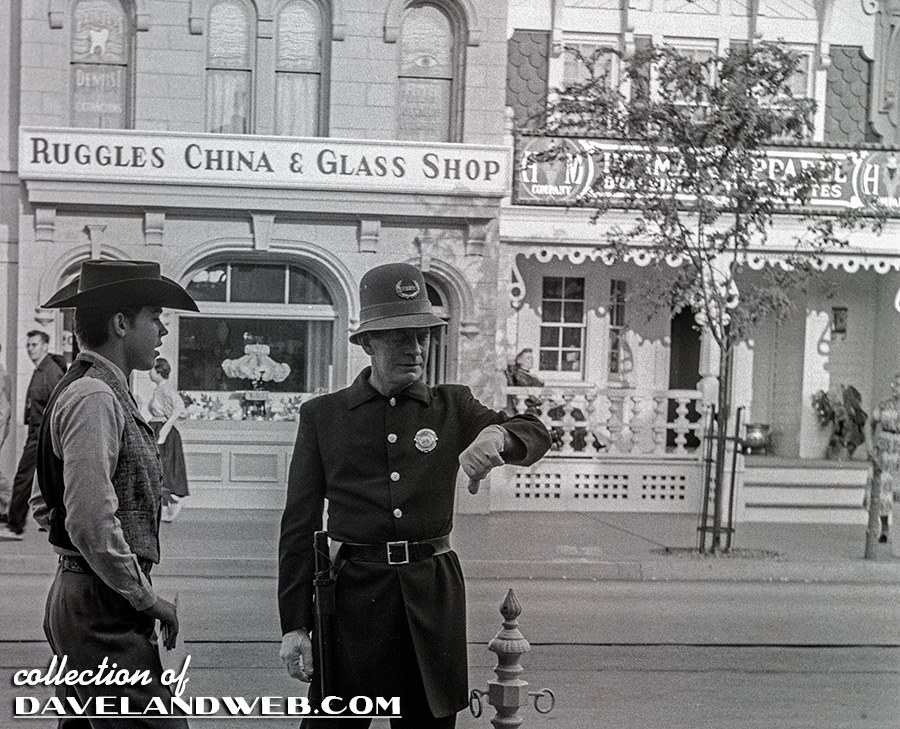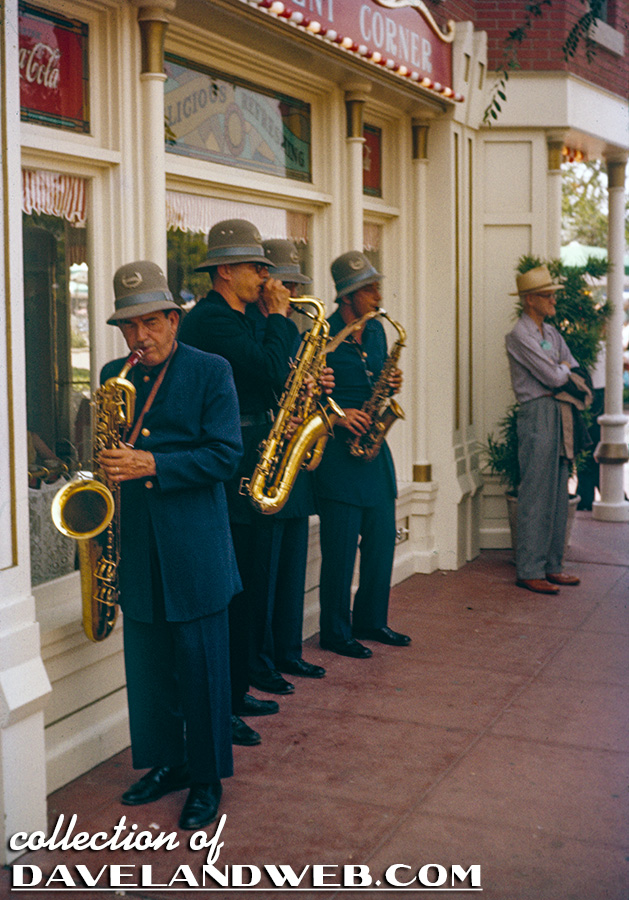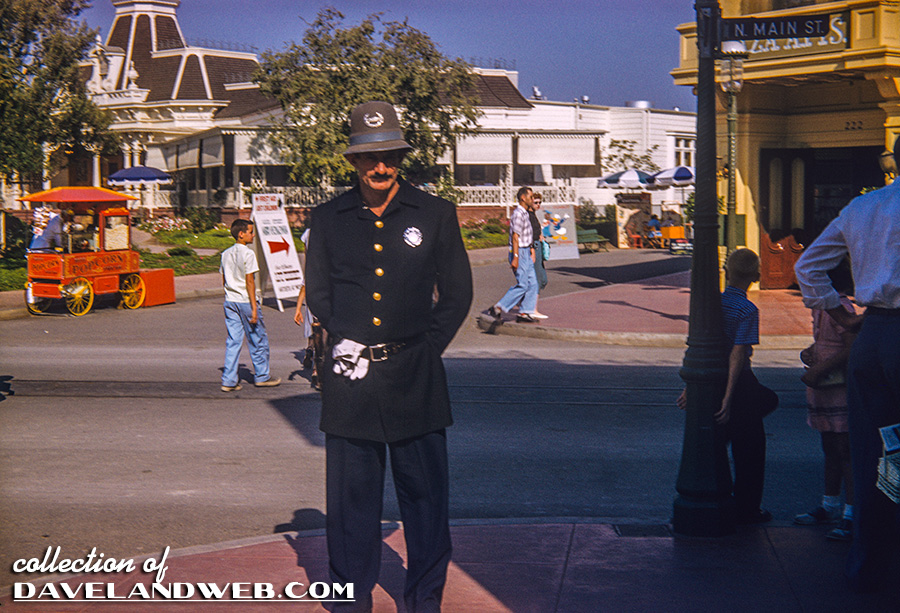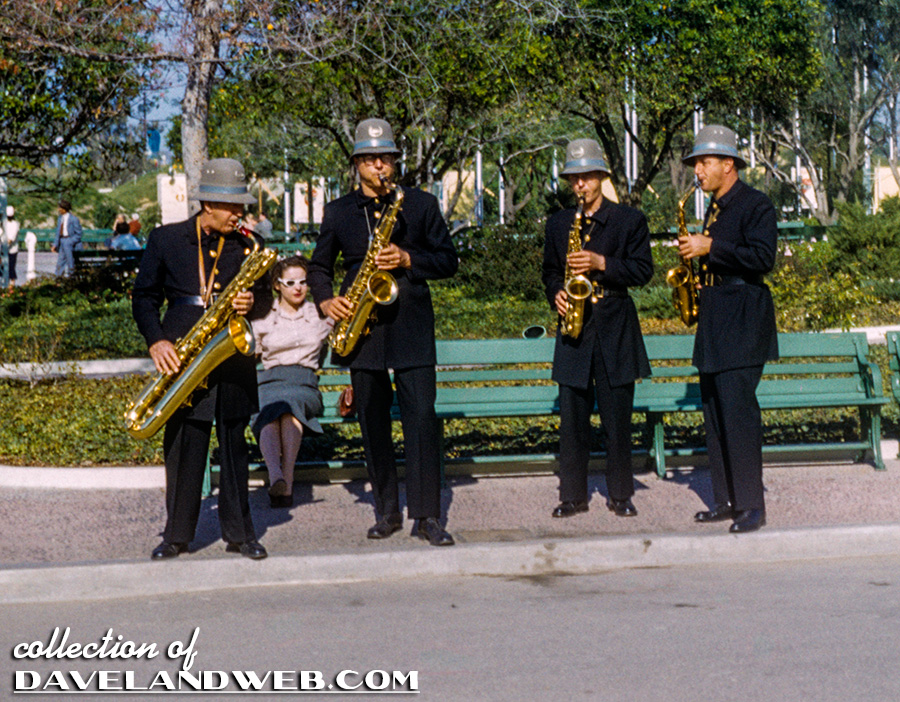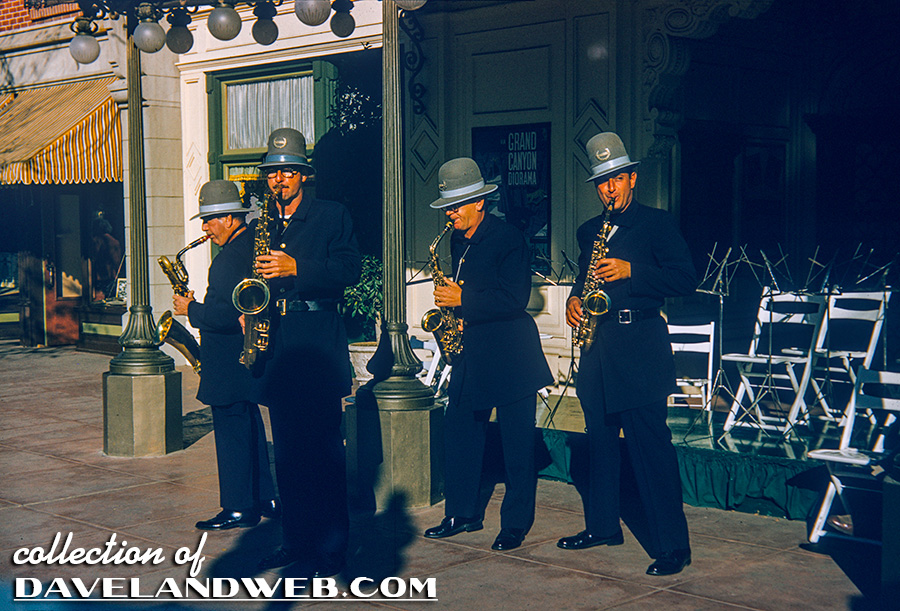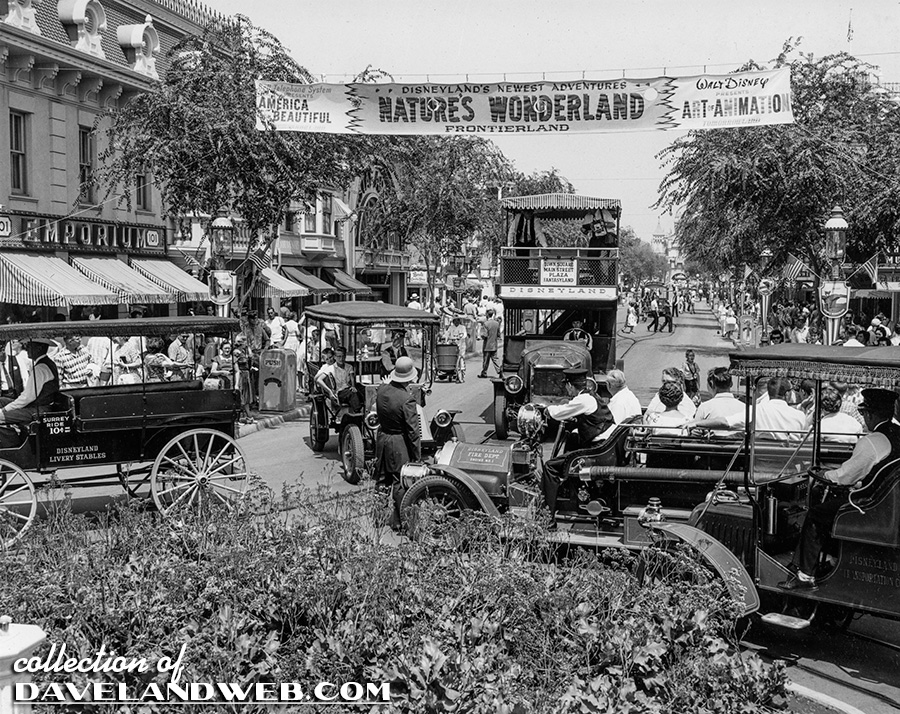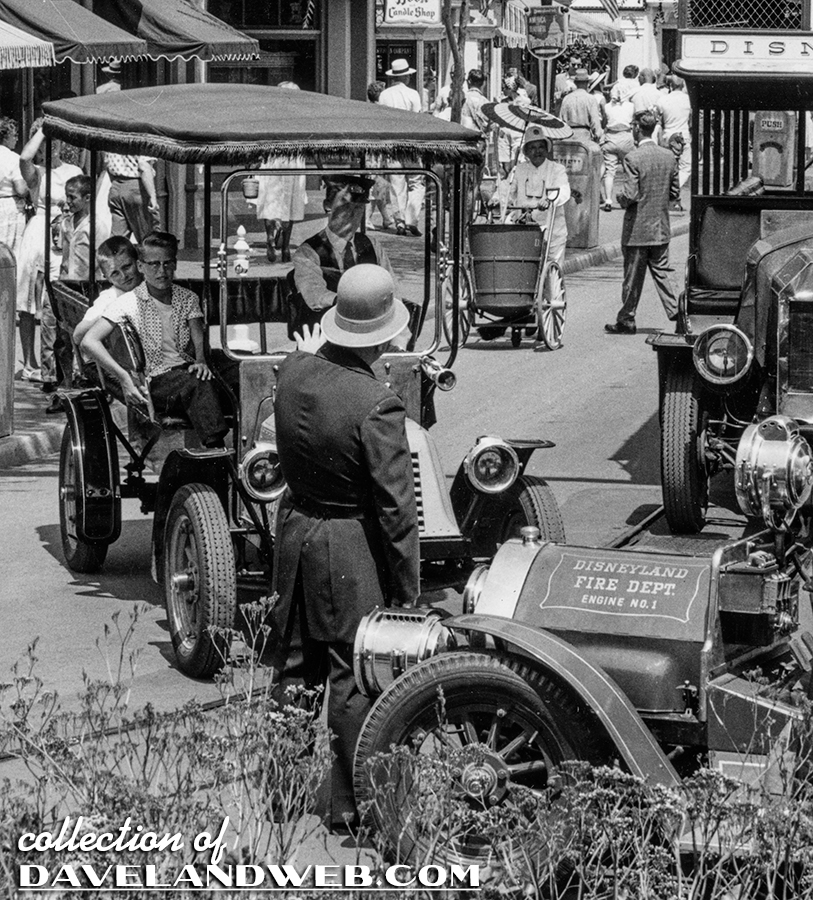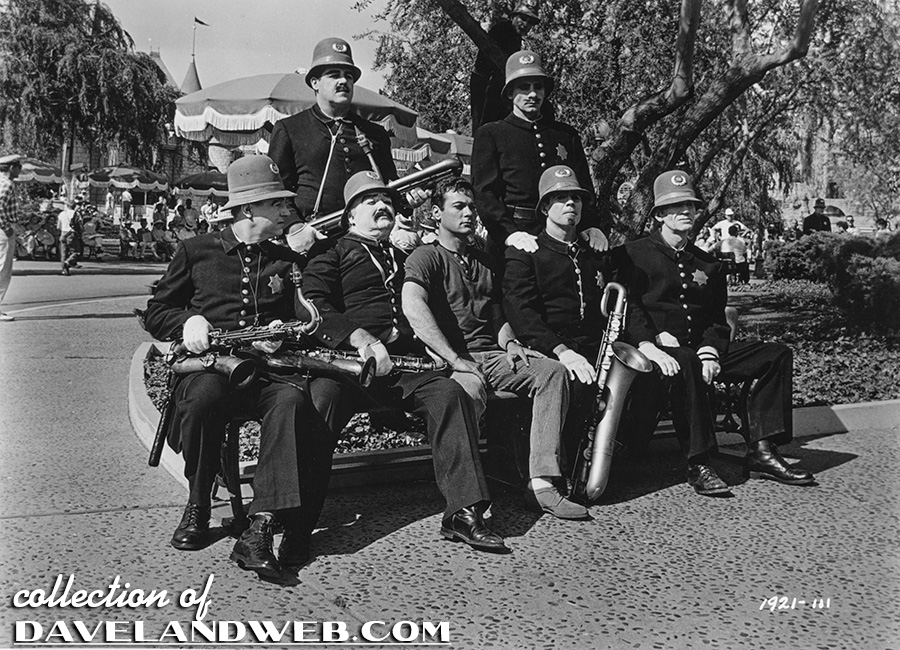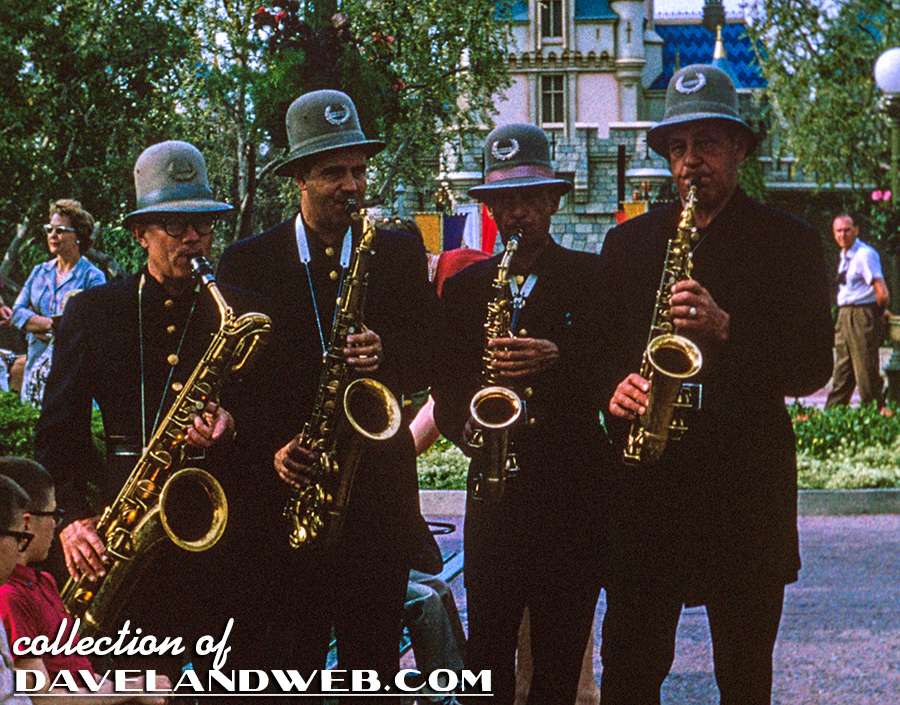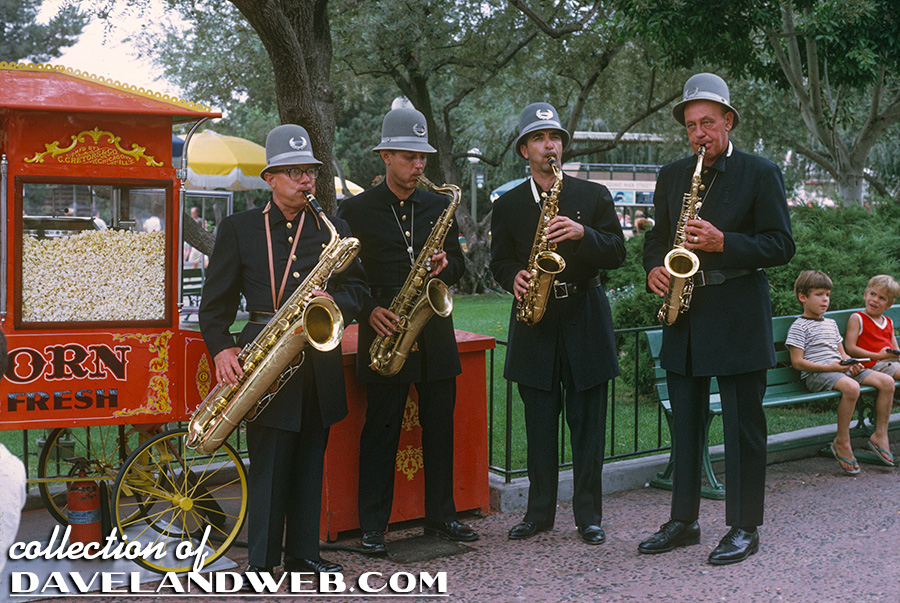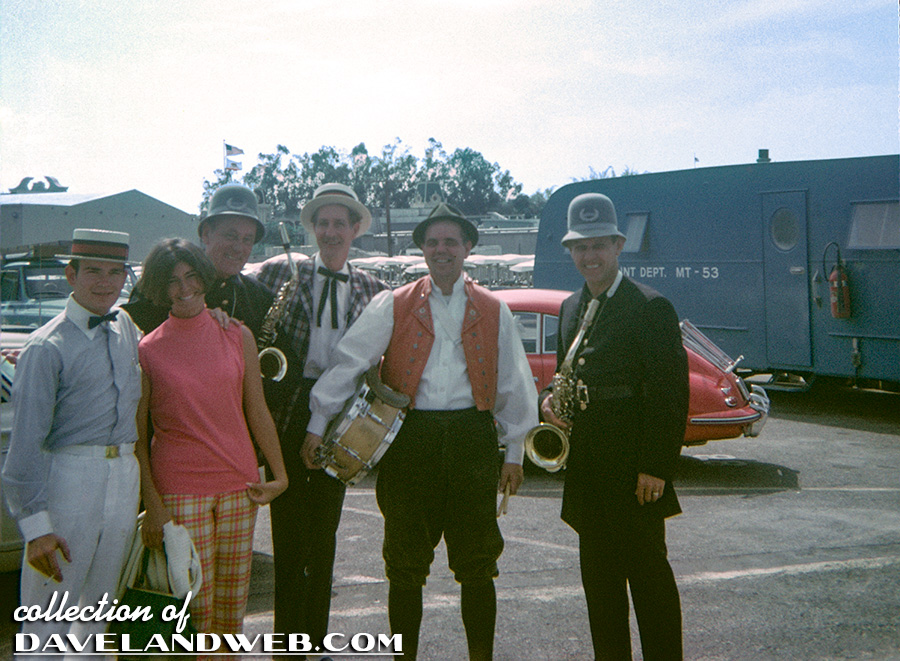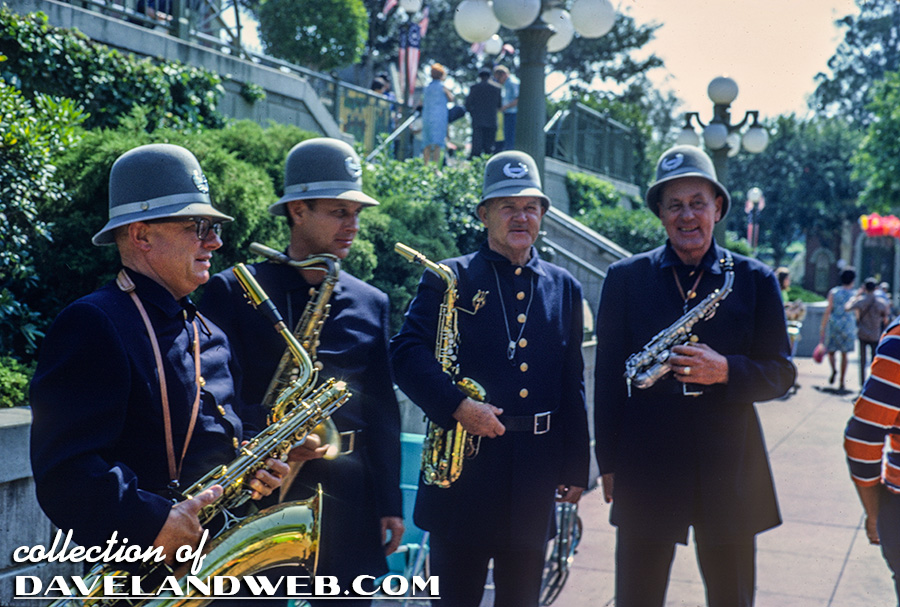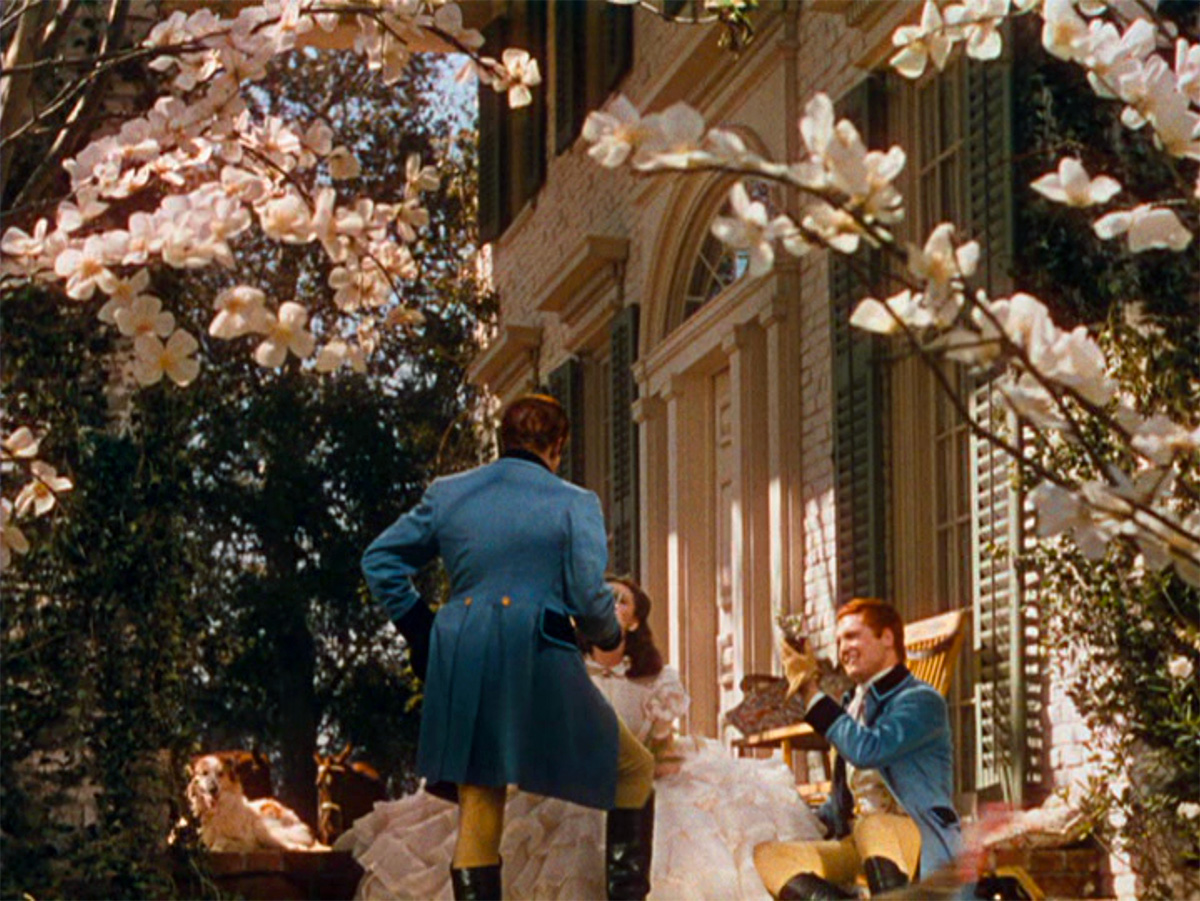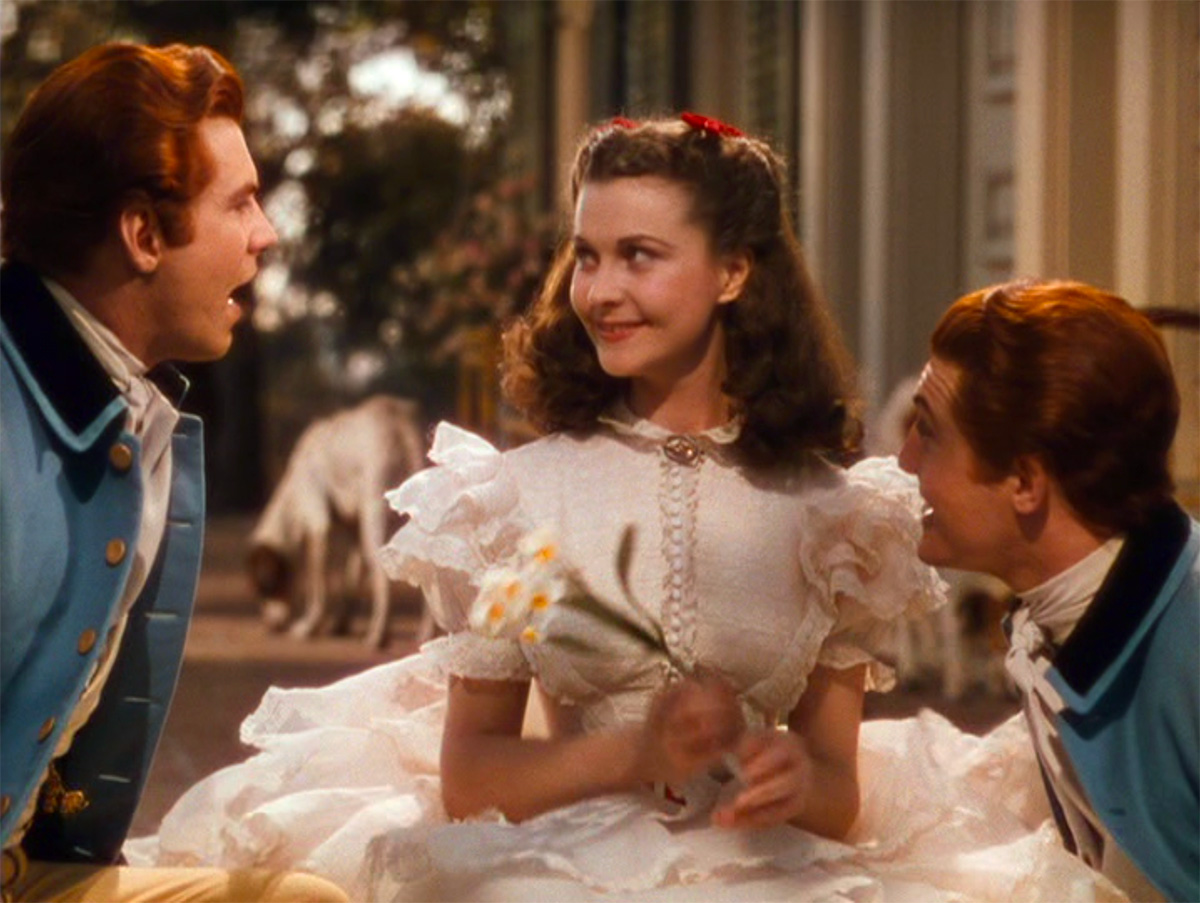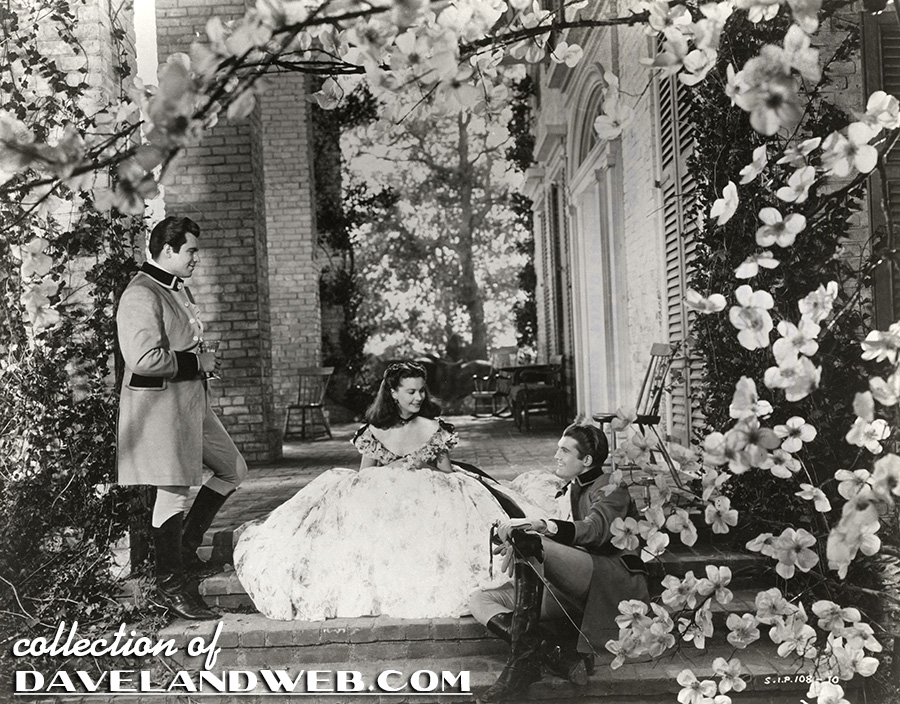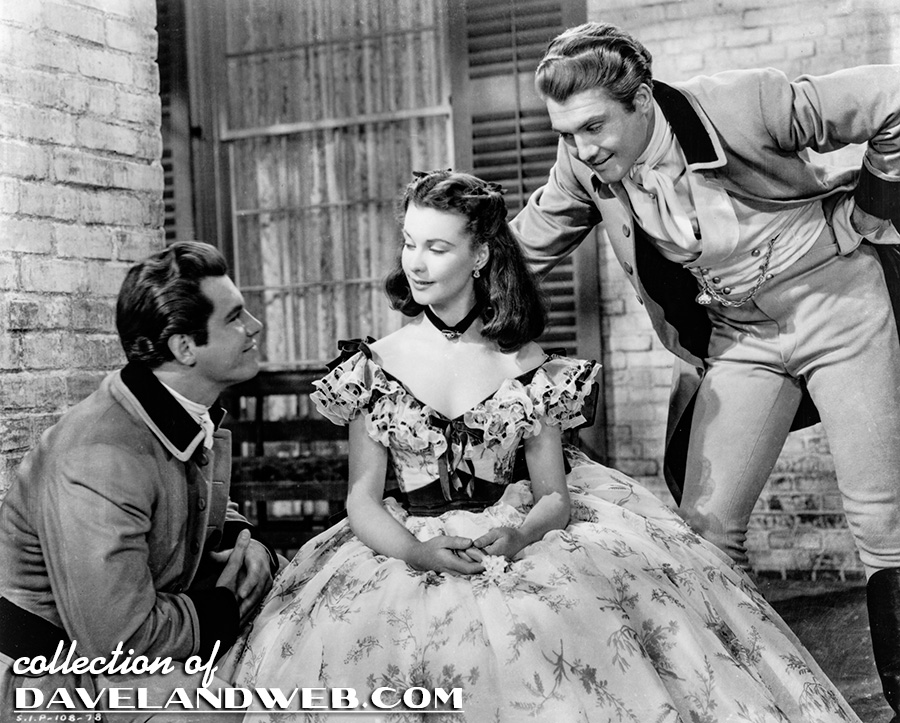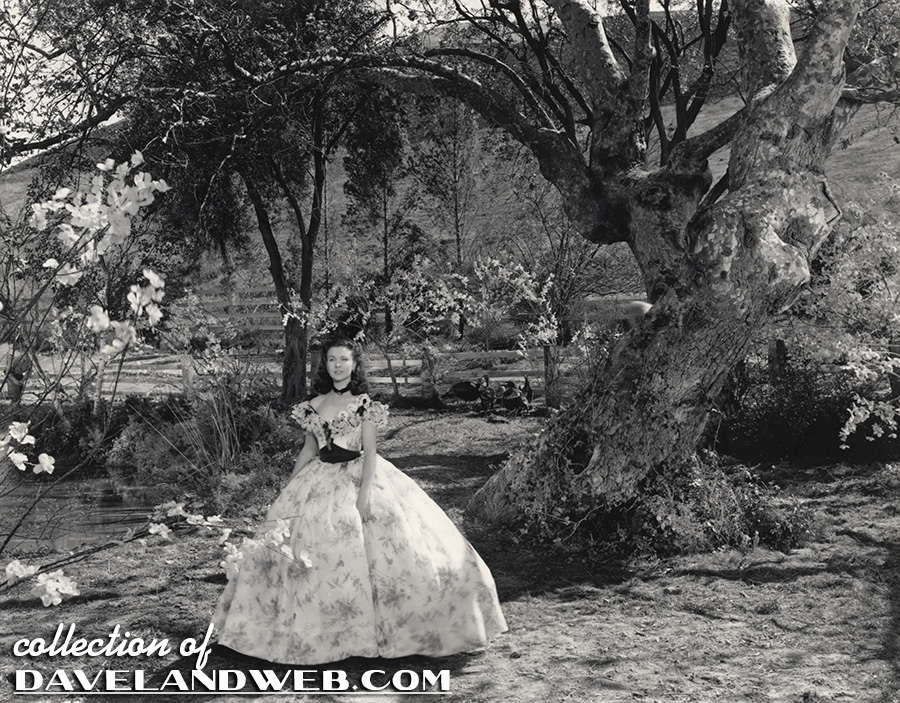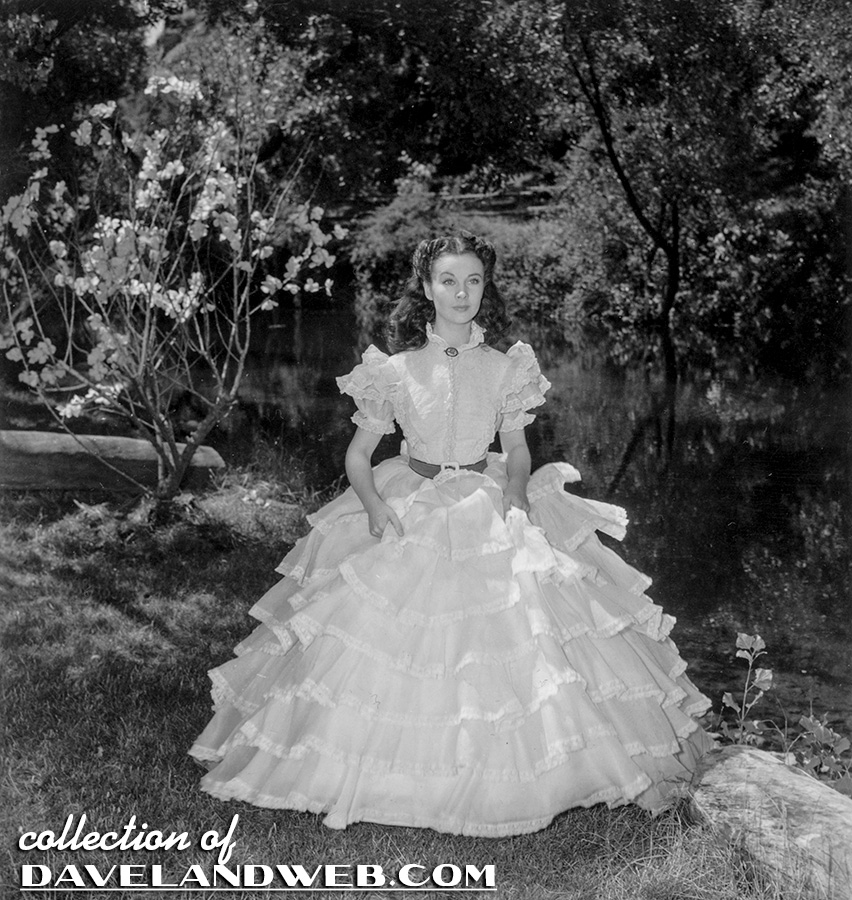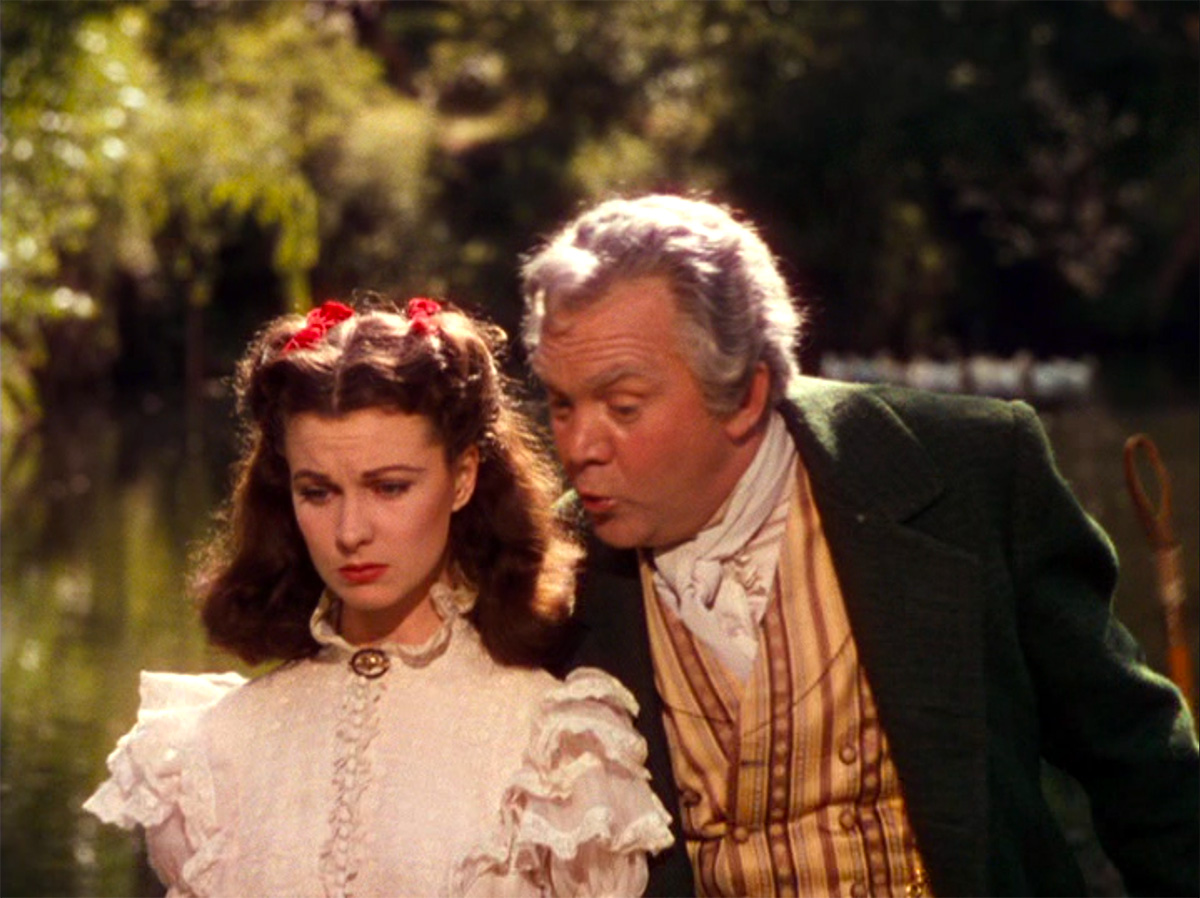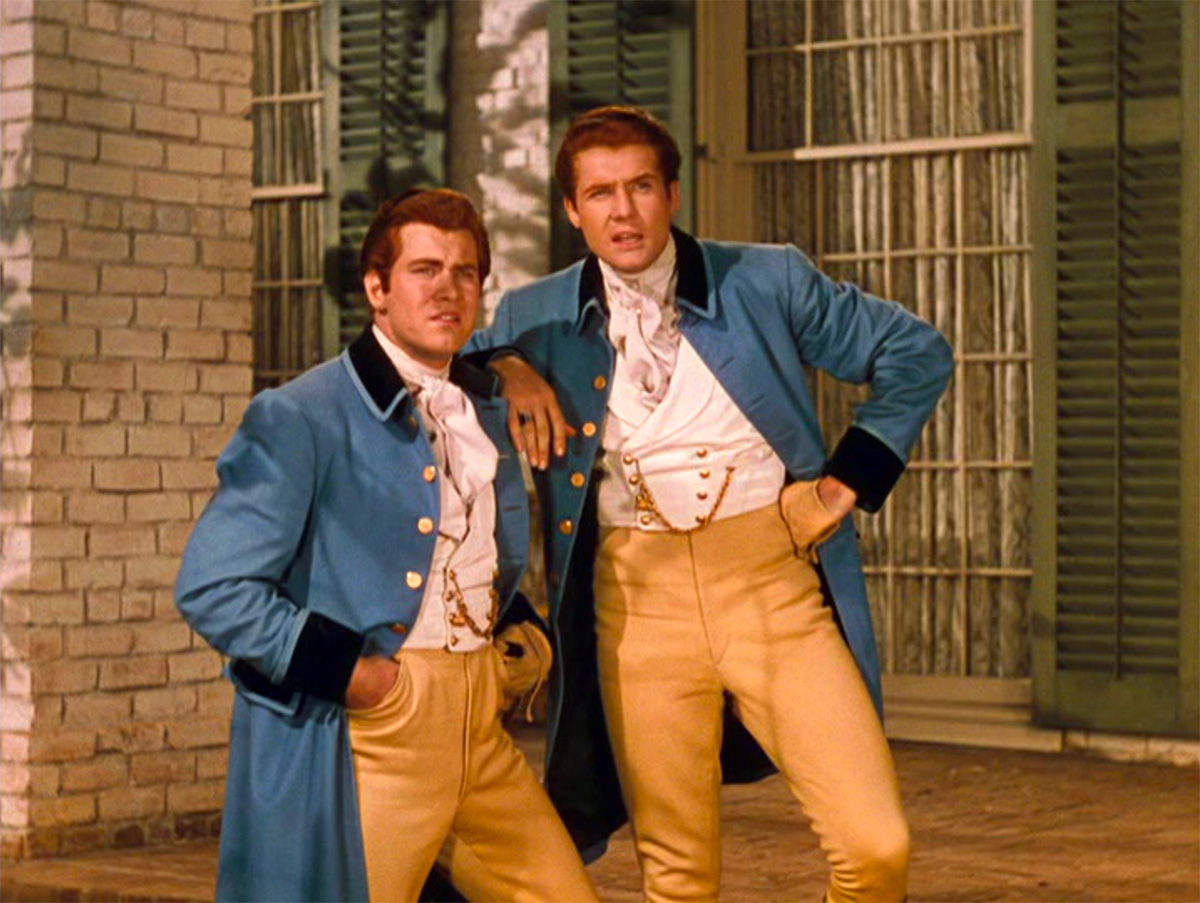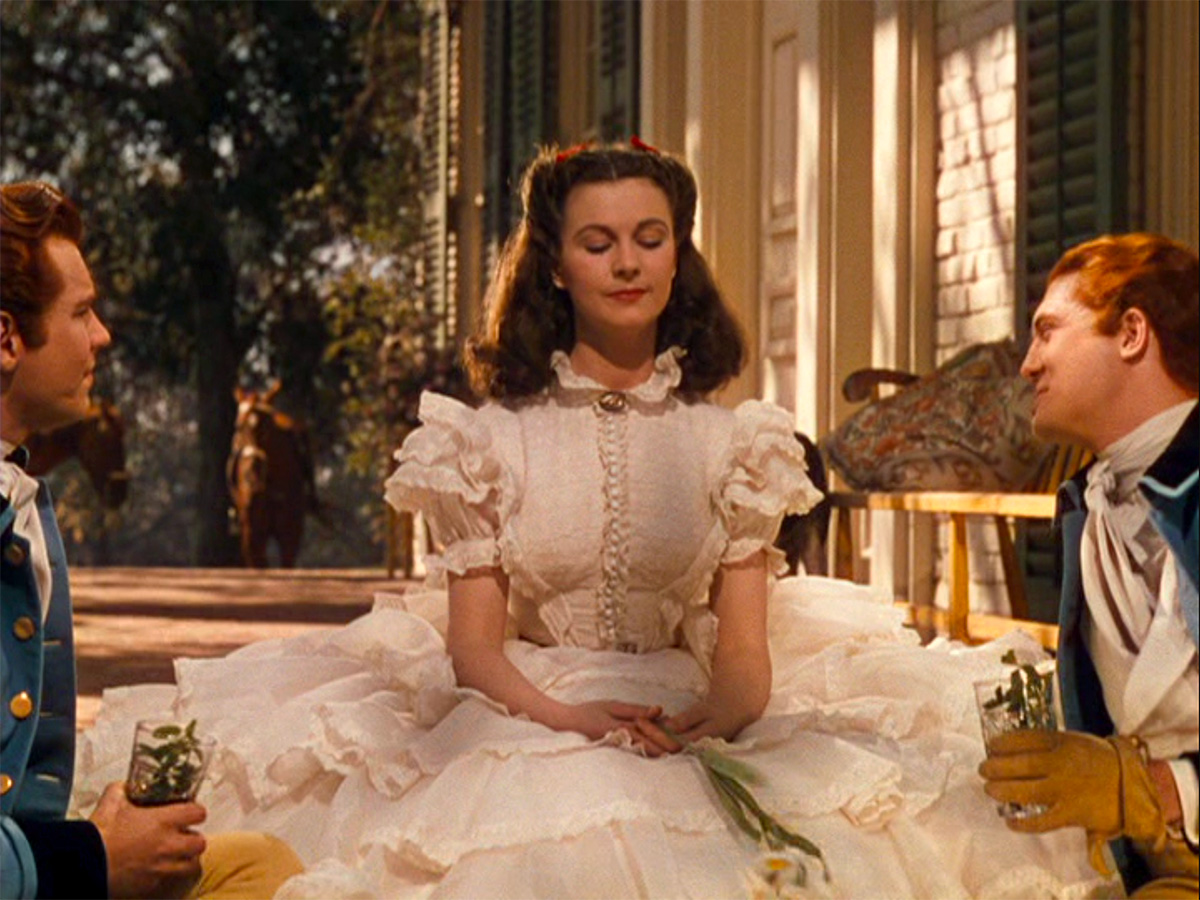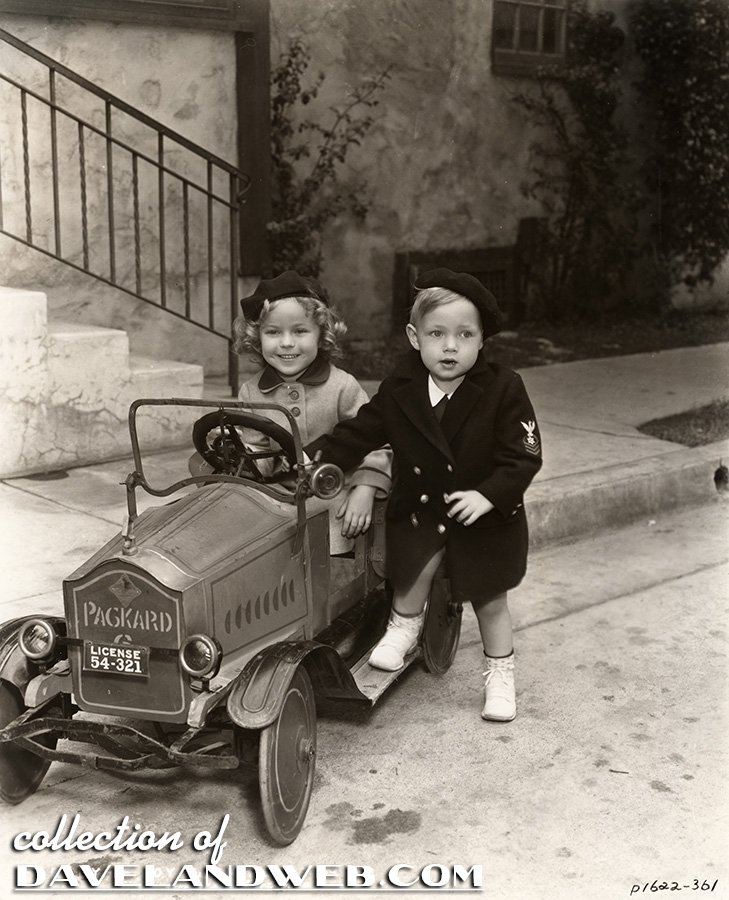
A few “new” recent acquisitions of Shirley and Baby Leroy have initiated today’s rabbit hole post, tying together a few odds and ends in my collection. Although I have other shots from this series of the two toddlers in a toy car on the Paramount lot, I’d never noticed that Leroy appears to be wearing one of Shirley’s coats! In the photo below from “Stand Up and Cheer” (1934) with Warner Baxter, you can see Temple wearing the coat in one of her opening scenes.
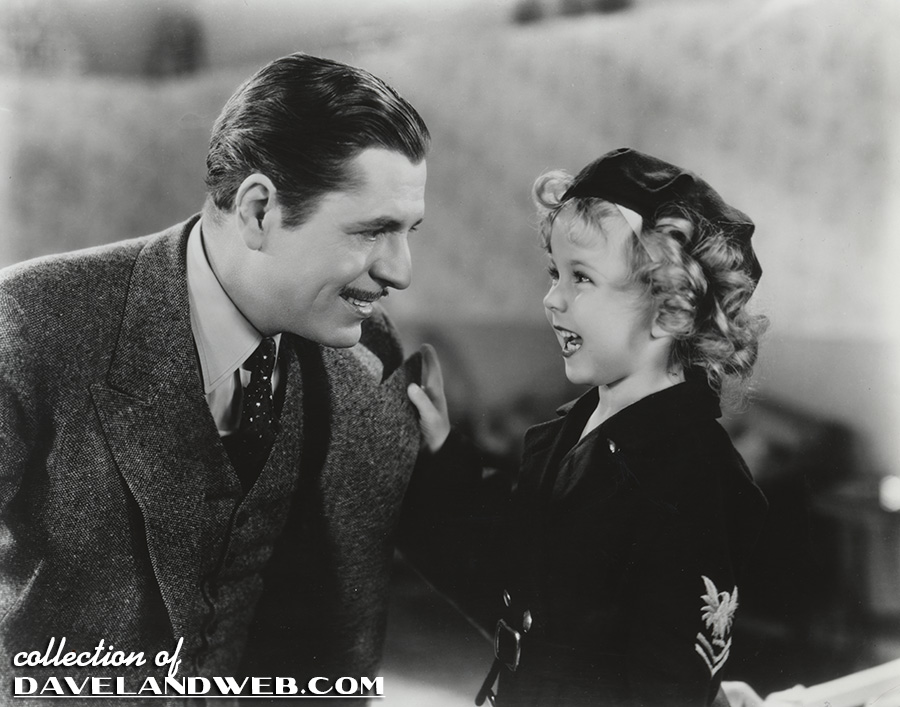
I adore these photos of the two peering into the mirror:

Leroy seems more excited about this shoot than Shirley, which is not surprising since he is a bit younger than her.
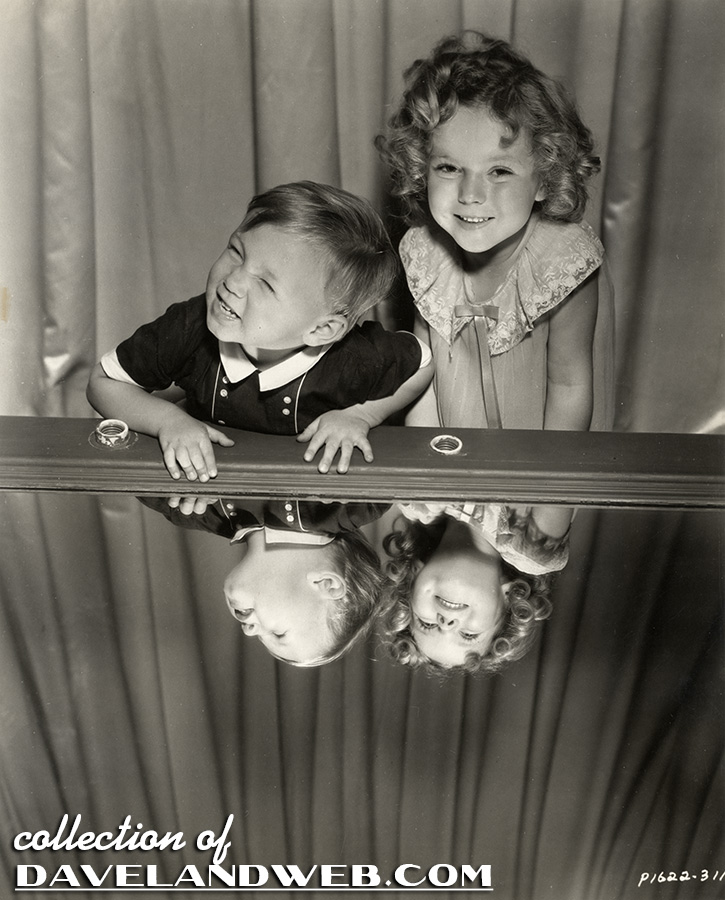
In this publicity still, Leroy is offering Shirley a cold beverage. She is wearing what is known as the Sailboat Dress:
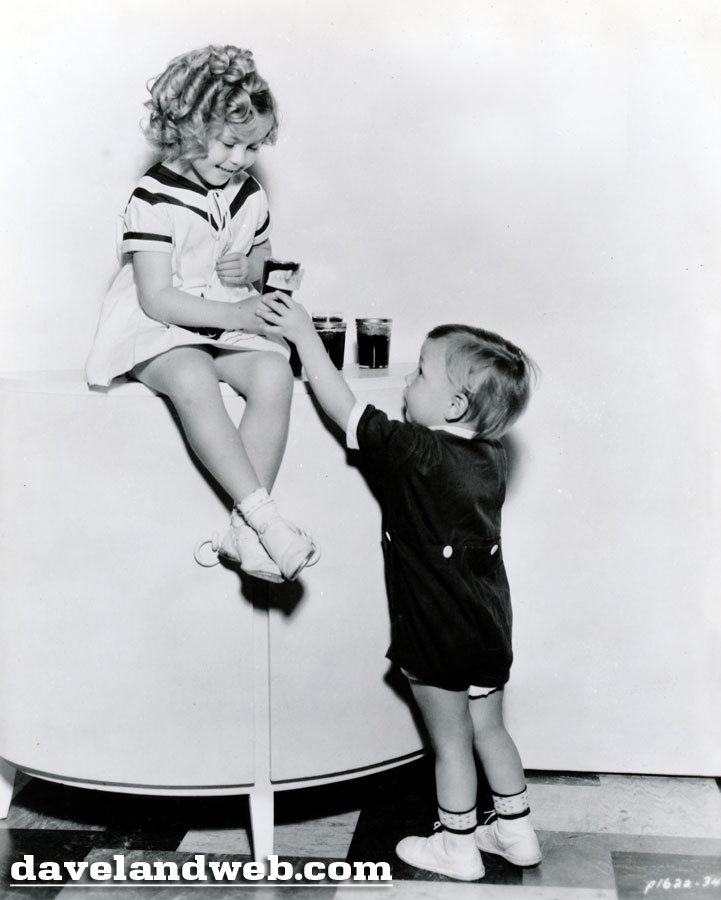
A better shot of the same dress in this Otto Dyer portrait from Shirley’s days at Fox Studio:

I don’t know the occasion for this 1934 Fox publicity shot, but Shirley is again wearing the Sailboat Dress. The gal in the gray suit/dress in the front row at left is Toby Wing; on the right in the white dress is June Knight:
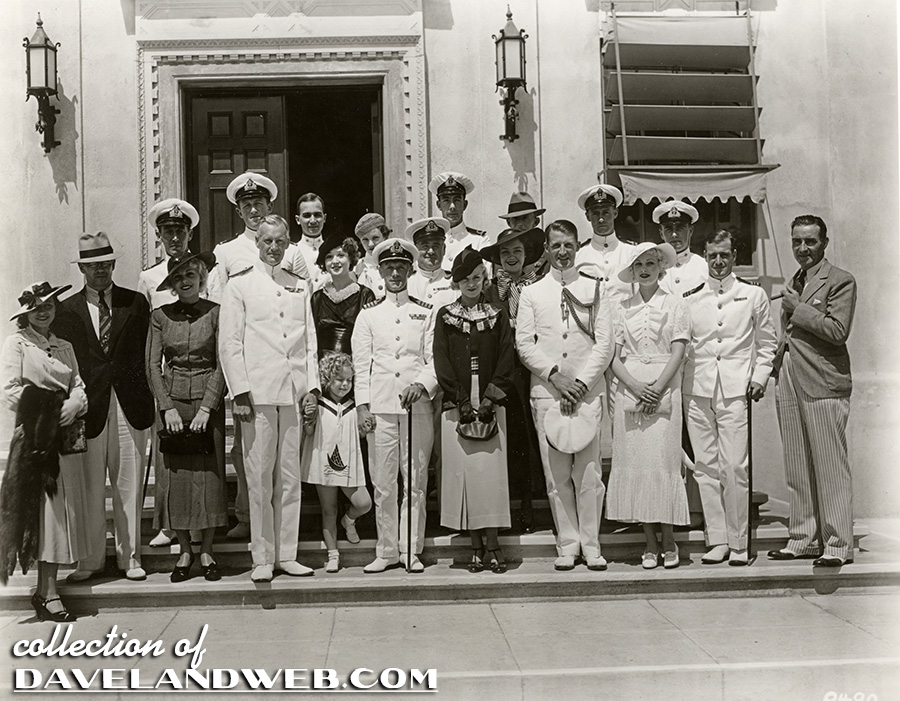
A rare shot of Shirley with a less than photogenic expression, most likely because the sun was in her eyes. I love how it candidly captures her!

Claire Trevor is also in this image with the Naval Officers:
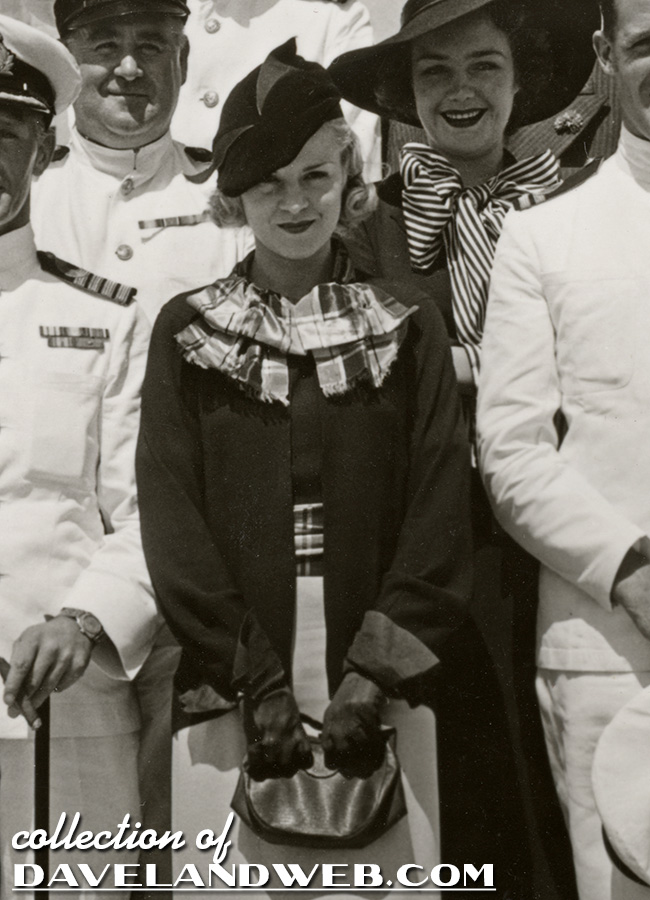
The Sailboat dress was recreated by the Ideal Toy Company for their popular 1930s composition Shirley Temple doll, available in a variety of colors:
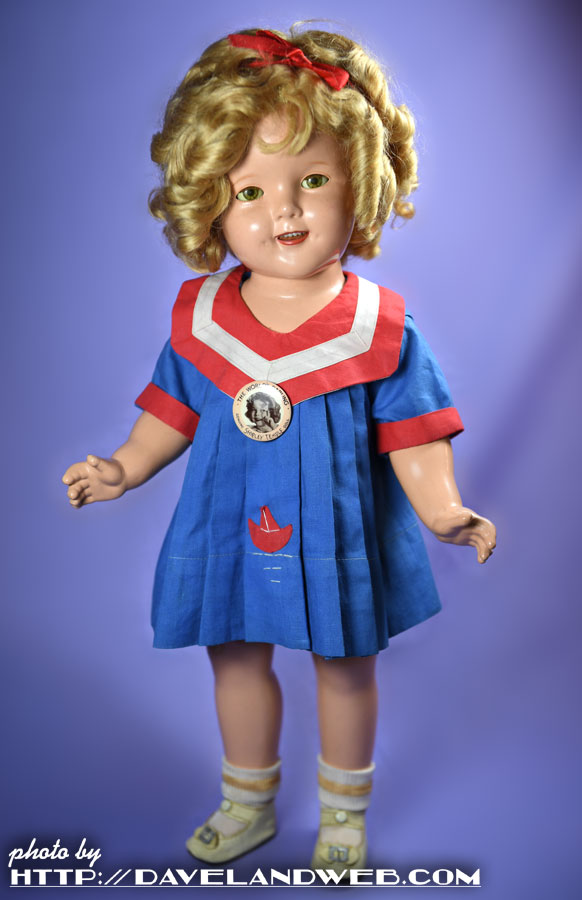
In the 1990s, the Danbury Mint did a series of Shirley Temple dolls holding a miniature version of the Ideal doll, mimicking the publicity stills from the 1930s that Shirley posed for:
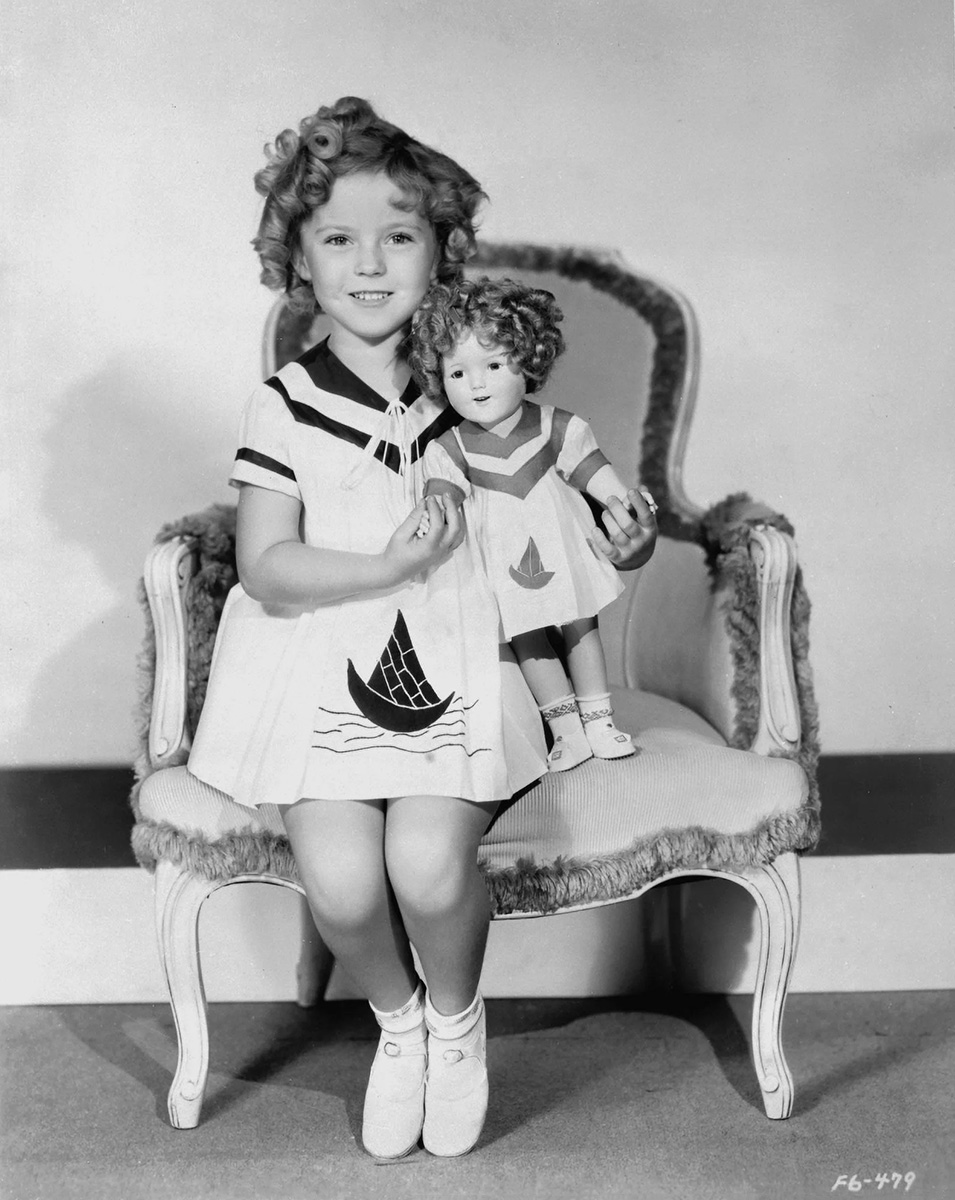
At least the miniature doll is adorable! I’ll leave it at that…
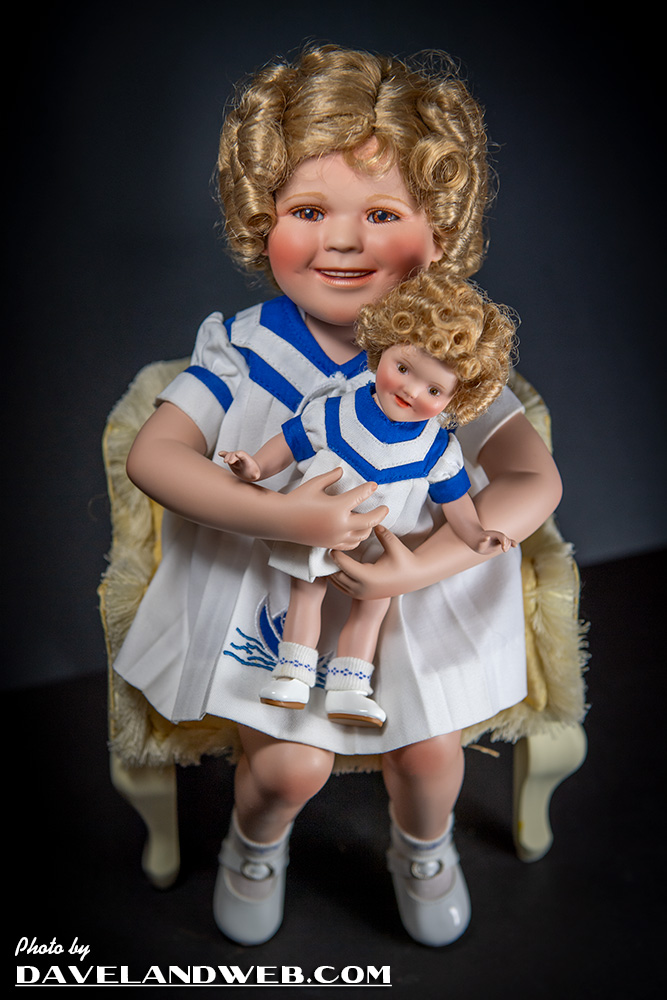
Shirley’s Sailboat Dress came up for sale in 2015 at the Theriault’s Love, Shirley Temple auction. From the catalog description:
Of crisp white cotton poplin, the middy-style dress has inset bands of navy blue, short puffed sleeves with navy blue banding, and an applique blue sailboat on the front enhanced with embroidered blue "waves". The dress has the cloth label of "De Betty Alden Shoppe Los Angeles". Generally excellent condition. Included is a studio photograph of Shirley Temple wearing this dress and holding a Shirley Temple prototype doll wearing a similar dress. Shirley Temple appeared in various publicity photographs wearing the dress, including one with Spencer Tracy, indicating a connection with the 1934 film "Now I'll Tell" in which both Temple and Tracy appeared. The dress was also used in doll costuming with variations of construction, but always with the same sailboat theme.
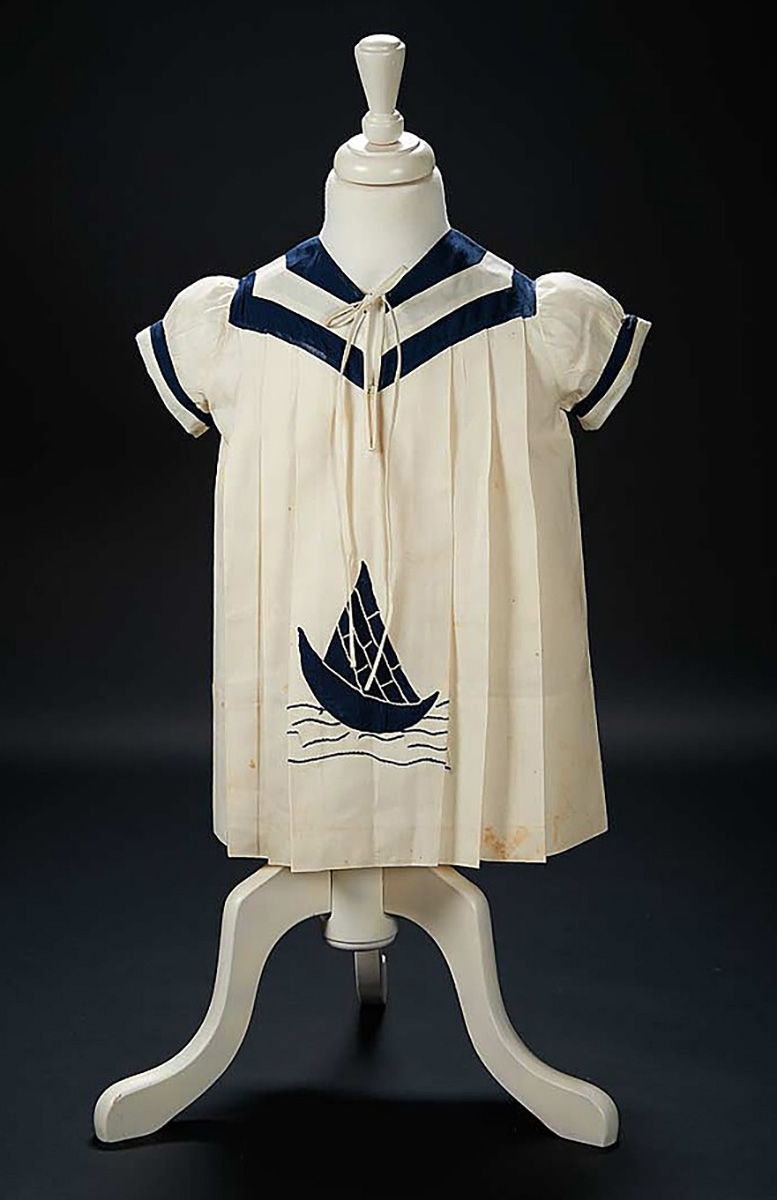
This outfit that Shirley wore in the final scene for “Bright Eyes” (1934) also came from “Ye Betty Alden Shoppe” (a typo on Theriault’s part) as did the coat worn by Baby Leroy in the first image from this post:
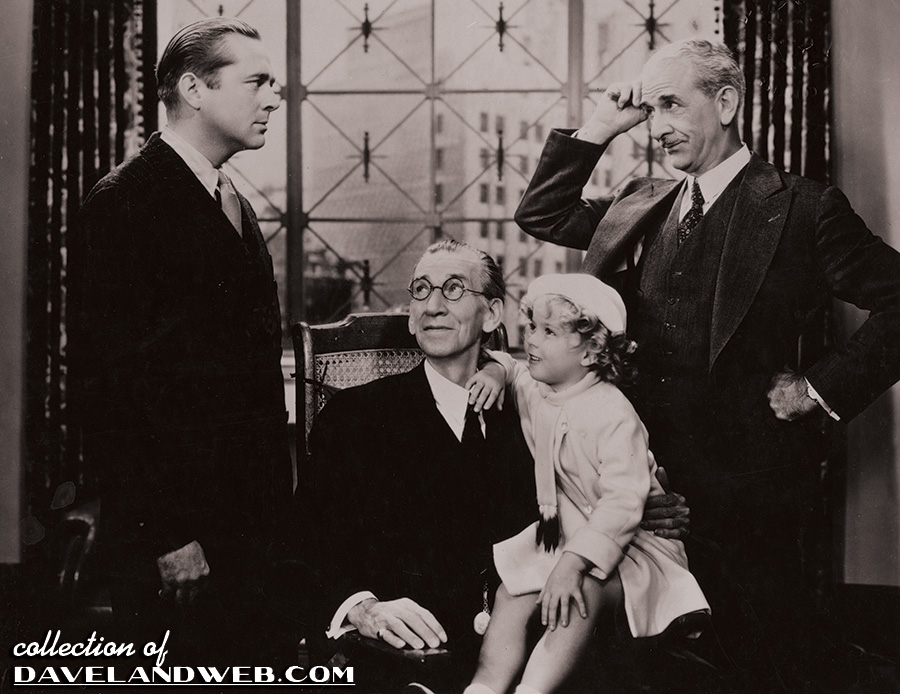
From the Miracle Mile LA website I found this image of Betty’s store, located in the Wilshire Tower, which is still located at 5514 Wilshire Boulevard:
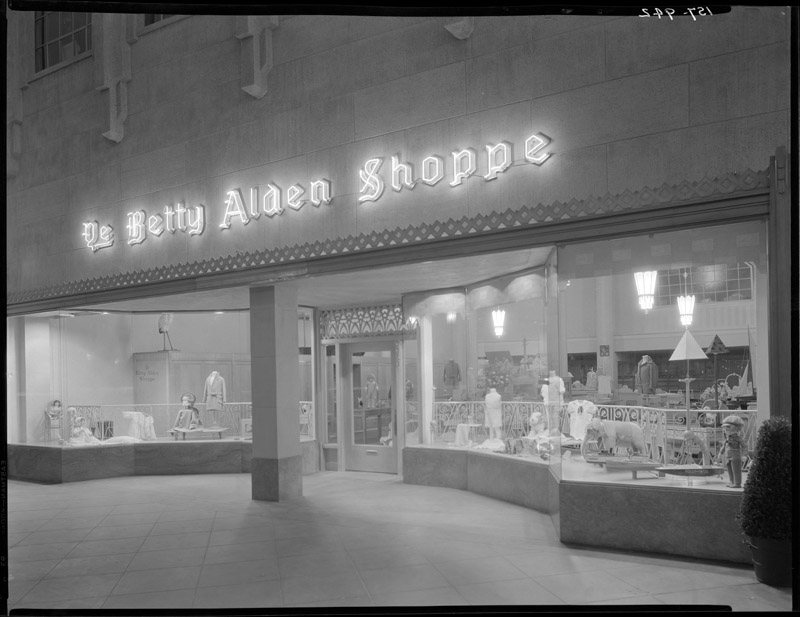
The R. John Wright Company released a felt version of the Shirley doll wearing the Sailboat dress (shown below at left) in 2018:
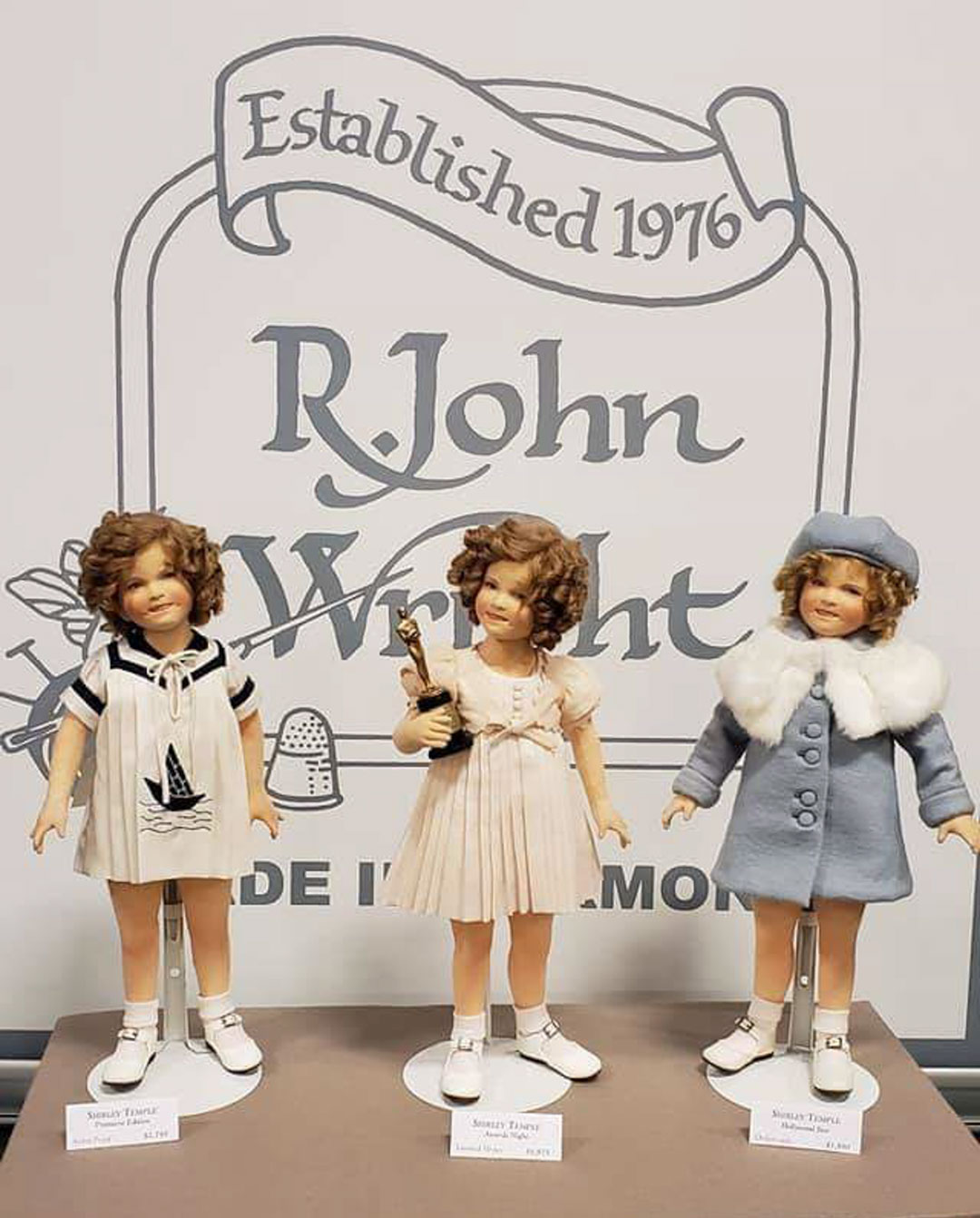
Phew! That’s it for today’s rabbit hole - I need a nap!
See more Shirley Temple photos at my main website.


